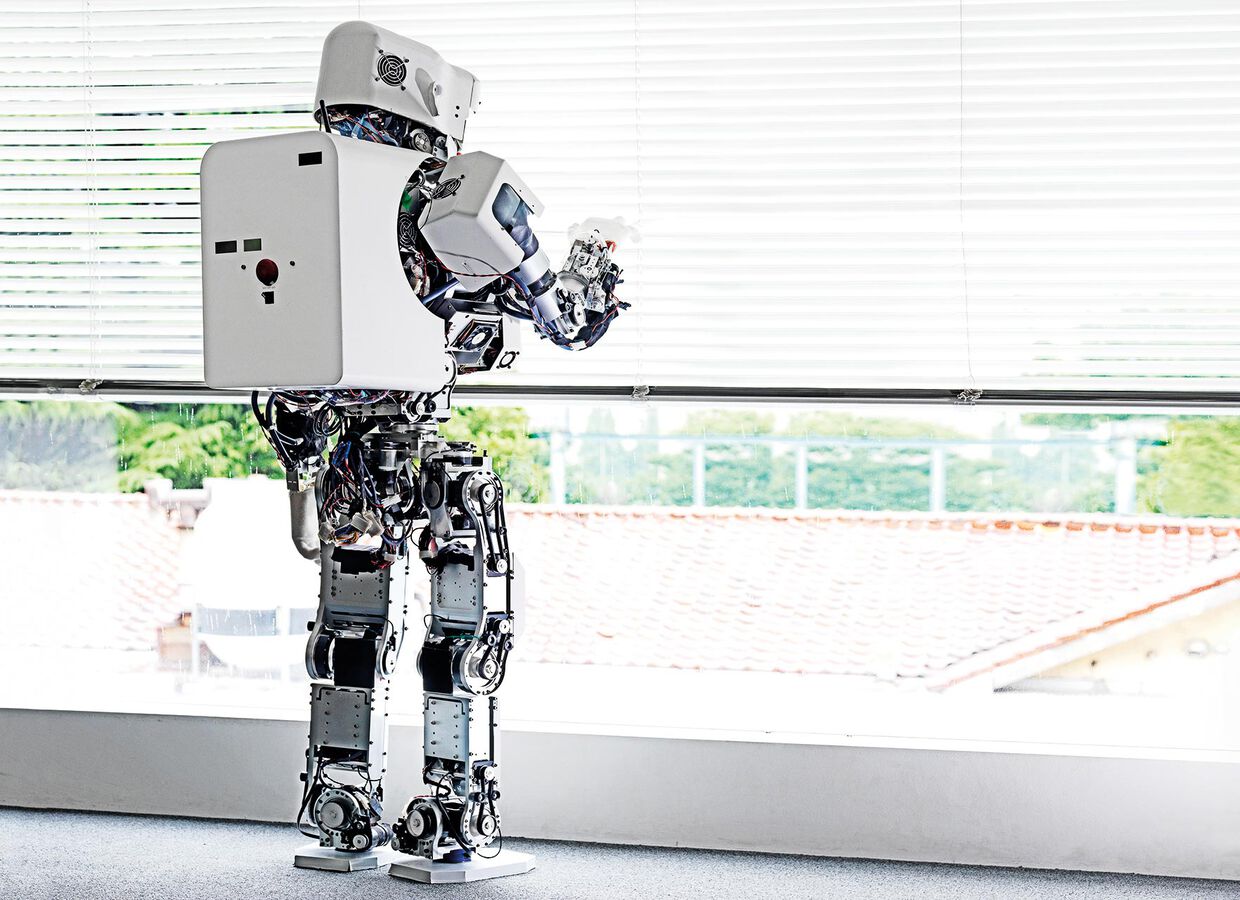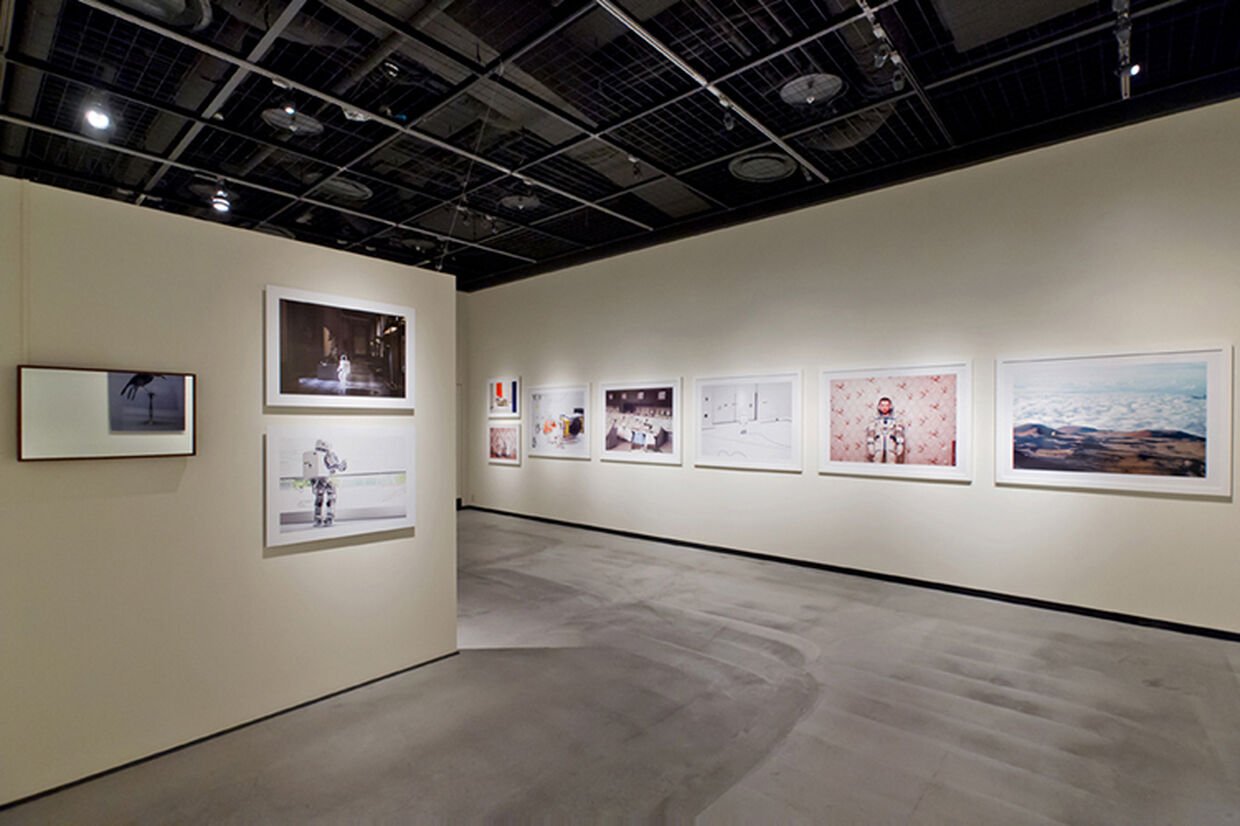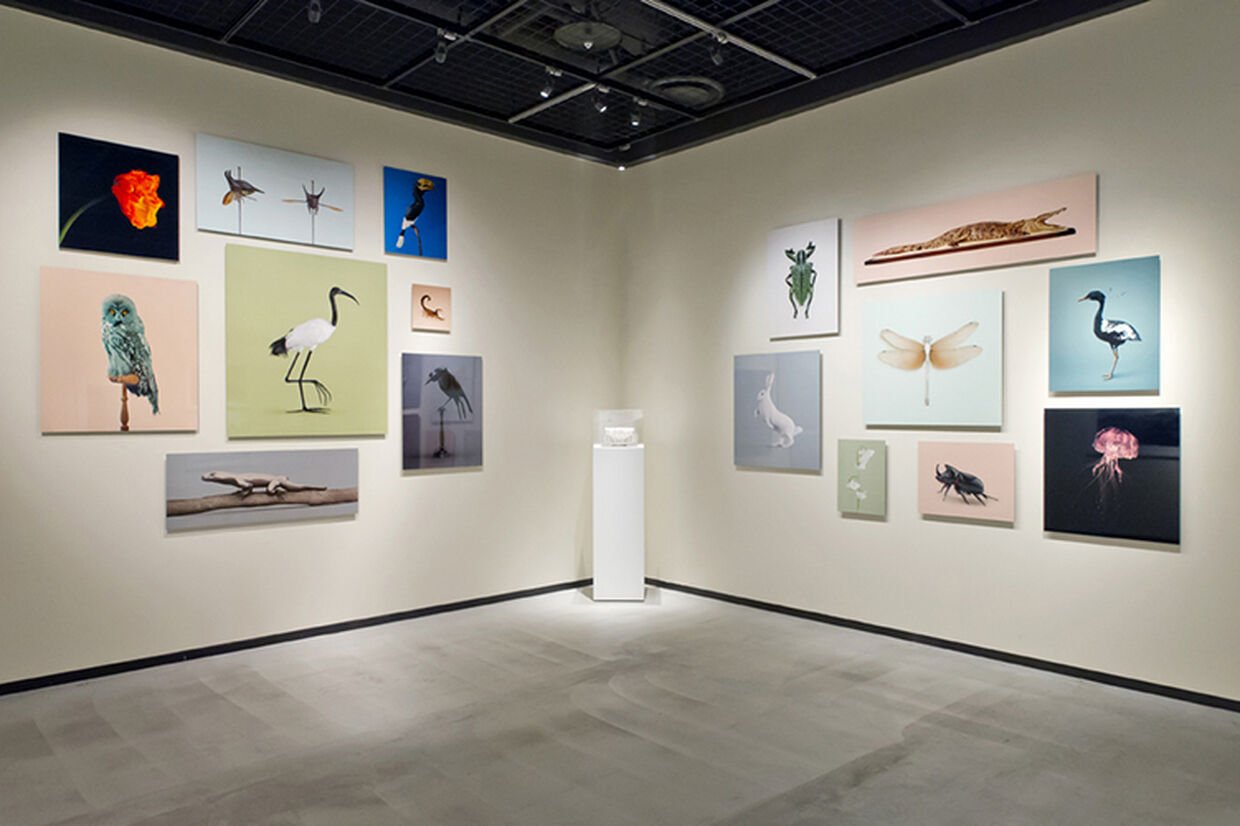--Please introduce yourself.
My name is Vincent Fournier. I am a French photographer, 44-years old and I live in Paris.
--Please tell us the concept and main purpose of this exhibition.
This exhibition presents three series from my work. The now well-known ‘Space Project,’ and for the first time in Japan ‘The Man Machine’ and ‘Post Natural History’ series.
--Please tell us the meaning of the title.
Although archeology is about the study of the past I use “Archeology of the Future” as my title. Usually archeology focuses on the past and is about discovering remains from the past and underground. However, what I wanted to show this time is not the past that has passed but the past that remains into the future. We explore the legacy of what will be in front of us. Tomorrow is past for people living the day after tomorrow. The title “Archeology of the Future” is expressed in the context of capturing time proactively.
--What was the catalyst for the making of ‘Space Project,’ ‘The Man Machine,’ and ‘Post Natural History’ that are part of this exhibition?
First, ‘Space Project’ demonstrates “future of the past” most. For those living in modern society going to space is the image of the past. It was the “future” for those living 50 years ago. This exhibition is based on my childhood dream about space just like everybody else dreamed a few decades ago. When I grew up, I was fortunate to have the opportunities to travel, which connected me to NASA in the United States and Star City in Russia and led to me realizing this series.
While “Space Project” demonstrates “future of the past,” “The Man Machine” demonstrates “Another Present.” In other words it is present and provides other options. There are many robots in our modern life. However, we don’t encounter “humanoid robot” even in our high tech society. In this series, the world with humanoid robots is depicted as normal. I wonder if human and humanoid robots can co-exist. “Post Natural History” demonstrates “Past of the Future.” Literally, Past of the Future. Plants and animals which naturally evolved will transform with genetic engineering. This series demonstrates the future we have not seen but that is possible. And for people in the future it is the possibility of past.
--When robots, machines and research institutions are filmed, it tends to become documentary photography. However, your work has a story. What do you keep in mind when you are filming?
“The Man Machine” is not a robot that became human but a robot that co-exists with humans. I film robots in natural positions and poses. I consciously capture robots that live with humans in the most natural state and viewers feel the story.
--Can you tell us about 3D print work? With the advancement of technology the limit of expression widens. What is the cutting edge technology you would like to try?
I was convinced that 3D photography would be possible when 3D printer technology came out. I was very interested in it and was able to produce work, which were not possible before. I was inspired with new ideas. Technological progress is rapid. I have many new ideas and challenges that I will not disclose just yet. For now, I will say that there is a lot of potential with the 3D scanner.
--Please tell us about the series of work “Past Forward”.
It is impossible for any artist to show all his series and works at any exhibition. It is unfortunate for artists and viewers. The collection of work introduces my world, and fulfills my desire. You can touch my world thanks to the wonderful collection of work. I hope that many people will have a chance to see this collection of work.
– What made you decide to become an artist?
I was interested in photography since I was a child. I studied photography and was lucky to have followed the path.
--The artists that you like?
There are many artists that I like and respect. Andreas gursky is one of them...
--Please tell me your source of inspiration.
The first inspirational source is probably childhood dreams. And I was especially affected by novels such as Jules Verne’s I read when I was a kid.
--Please tell me some books or movies that have marked you.
Of course there is the Jules Verne's novel and also movies such as “Solaris” or “2001 A Space Odyssey”.
--How do you spend your holidays?
I travel and I read a lot.
--Is there a place or country you would like to visit?
I am very lucky because my work gives me opportunity to travel a lot and discover many new places and people. So I just really enjoy any new places I I have a chance to visit.
--Do you have any project you want you want someday to realize? (subject , Place,... )
Now I am working Post Natural History series. But I have of course several news ideas in mind.
And to complete the series of Space Project, I would really love to cooperate with JAXA for a shooting in their Japanese sites. So if anyone from JAXA is reading those lines...
--Your stay in Tokyo was very short but did you enjoy it? Is there a place you liked particularly?
It is my 4th or 5th visit to Japan and I always really enjoy it. This time I made a great discovery. It’s the Museum « Intermediatheque » just in front of Tokyo Station. I was impressed by the great link to my Post Natural History series.
--Please tell us about your future projects.
After this exhibition I will be showing in several international galleries and museums. And I'll also continue to work on the 3D series.
--Please give a message to the people coming to the exhibition.
Come as you are, art lover, scientist, artist, poet... and enjoy a journey in space and time!



















